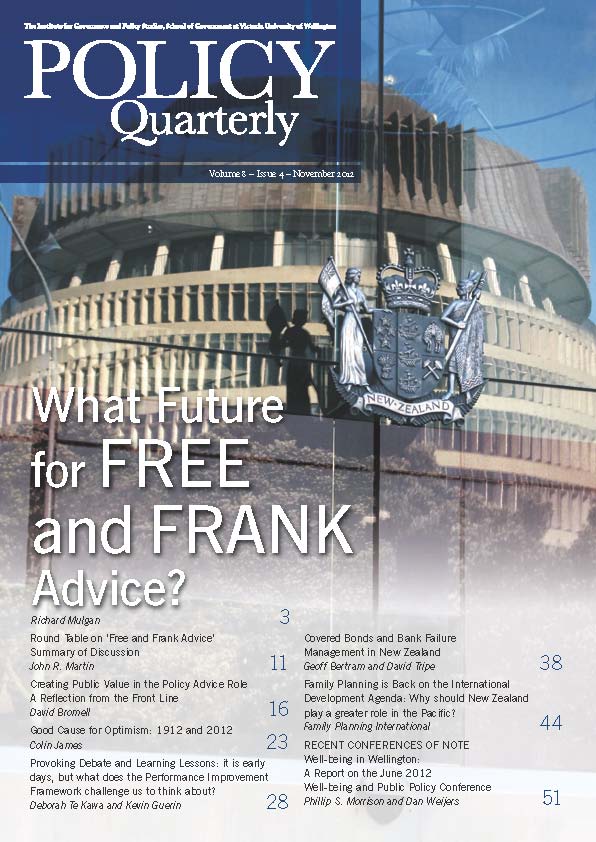Covered bonds and bank failure management in New Zealand
DOI:
https://doi.org/10.26686/pq.v8i4.4429Keywords:
global financial crisis of 2008, South Canterbury Finance, wholesale deposit guarantee scheme, deregulation, complex financial engineering, Reserve Bank of New Zealand, overseas-owned New Zealand bank, Covered bondsAbstract
The global financial crisis of 2008 has highlighted the question of where the costs fall when banks (or other financial institutions) fail. The issue is a real one. Failures do happen, and have become more common in the deregulated policy environment that developed worldwide from the 1980s. New Zealand has seen the collapse of the Development Finance Corporation in the 1980s; the near-failure of the Bank of New Zealand in 1990 (after a previous rescue in 1988, a further $640 million government bailout was needed in 1990 (Cardow et al., 2011)); and the failure of a string of finance companies culminating with that of South Canterbury Finance (which has left taxpayers carrying well over $1 billion of assets on which recoveries are questionable).
Downloads
Downloads
Published
Issue
Section
License
Permission: In the interest of promoting debate and wider dissemination, the IGPS encourages use of all or part of the articles appearing in PQ, where there is no element of commercial gain. Appropriate acknowledgement of both author and source should be made in all cases. Please direct requests for permission to reprint articles from this publication to Policy-Quarterly@vuw.ac.nz.



